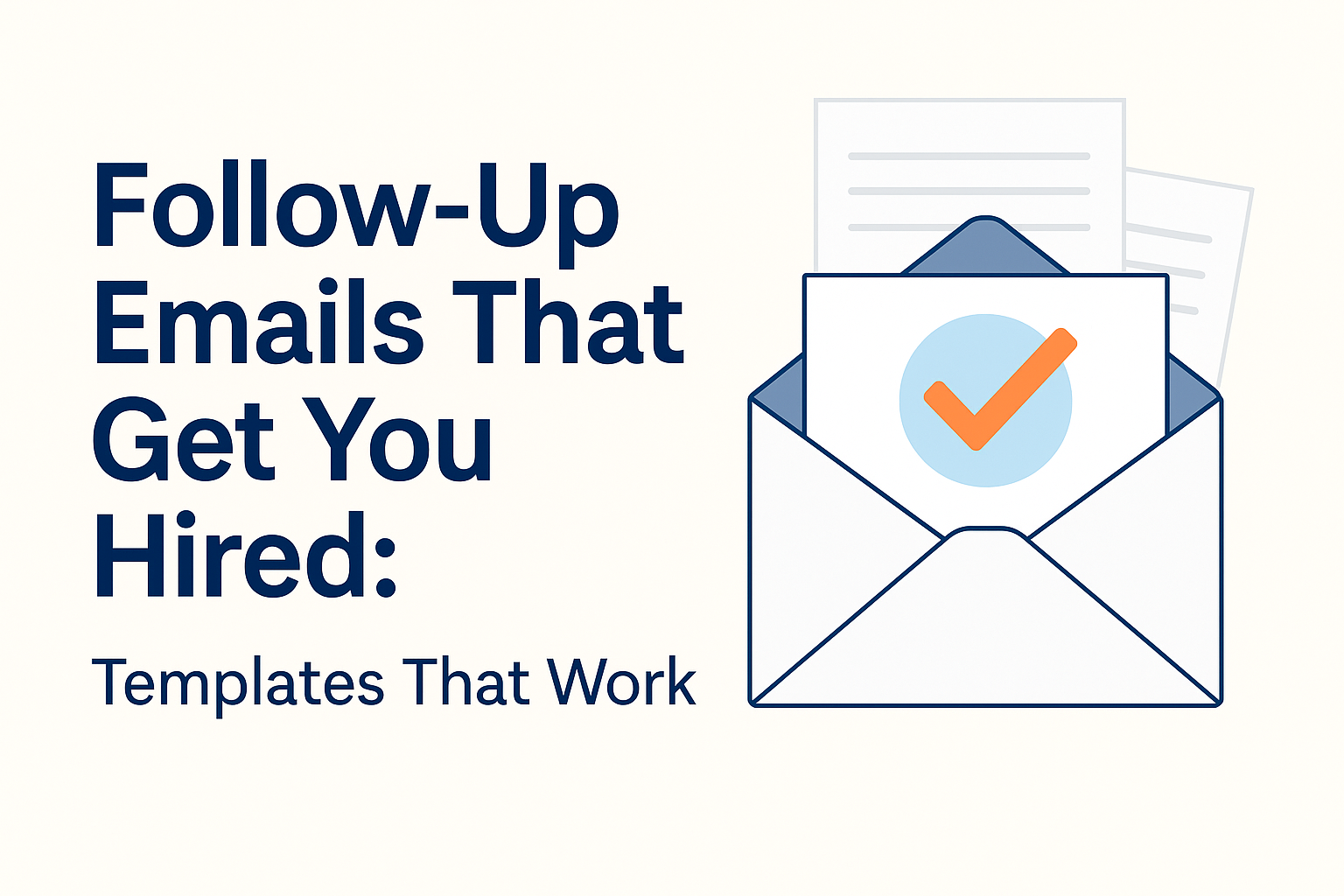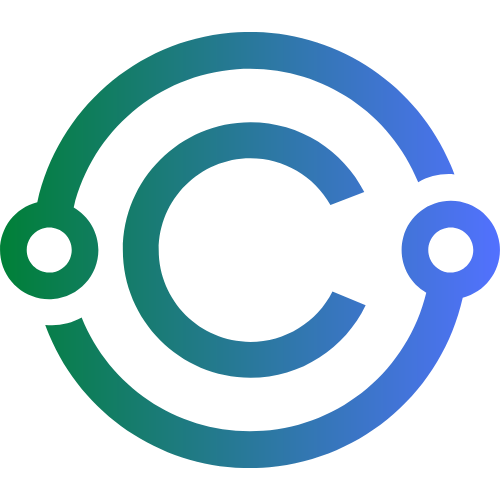Follow-Up Emails That Get You Hired: Templates That Work

You finished your interview. You answered every question confidently. Now what?
The job search doesn’t end when you walk out of the room (or close Zoom). In fact, one of the most overlooked steps is also one of the most powerful: the follow-up email.
A great follow-up email can:
- Reinforce your interest
- Show professionalism and communication skills
- Help you stand out from the crowd
- Keep your candidacy top of mind
In this blog, we’ll cover:
- Why follow-up emails matter more than you think
- When to send them
- What to say (and what to avoid)
- 3 ready-to-use templates for different scenarios
- A real case study
- Tools to help you track and optimize your outreach
Let’s write the email that gets you hired.
1. Why Follow-Up Emails Matter in 2025 and Beyond
Hiring timelines are getting longer, competition is fierce, and candidates often disappear after the interview.
By following up, you:
- Show gratitude and respect
- Reaffirm your excitement for the role
- Remind the interviewer of your strengths
- Build a reputation as someone who follows through
Fact: According to CareerBuilder, 22% of hiring managers are less likely to hire a candidate who doesn't send a follow-up note.
2. When to Send a Follow-Up Email (Timing Is Key)
✅ After the interview: Within 24 hours
✅ After applying (if no response): After 5–7 business days
✅ After no response post-interview: Follow up again after 7–10 business days
Rule of thumb: Don’t pester. But do persist—with courtesy.
Tip: Send emails during business hours (Monday–Thursday, 9–11 a.m. works best).
3. What to Include in a Great Follow-Up Email
Your email should be short, warm, and specific.
Structure:
- Greeting
- Thank you for the opportunity
- One specific thing you enjoyed about the interview
- Reinforce interest + fit
- Optional: Add something you forgot to mention
- Close politely with next steps or availability
4. What NOT to Include in a Follow-Up Email
❌ Asking about salary/benefits too early
❌ Repeating your resume or entire life story
❌ Sounding desperate (“Please hire me!”)
❌ Typos, generic language, or mass-sent templates
Pro tip: Always proofread. Try tools like Grammarly or Hemingway.
5. Follow-Up Email Templates That Work
Template 1: After a Job Interview
Subject: Thank You – [Your Name], [Job Title] Interview
Hi [Interviewer’s First Name],
Thank you so much for taking the time to speak with me today about the [Job Title] role at [Company Name]. I really appreciated the opportunity to learn more about your team and the exciting projects you’re working on.
Our conversation about [specific topic discussed] really resonated with me, and I’m even more enthusiastic about the possibility of contributing to [Company Goal/Initiative].
Please don’t hesitate to reach out if you need anything further from my side.
Thanks again, and I hope to speak with you soon.
Best regards,
[Your Full Name]
[LinkedIn Profile]
[Phone Number]
Template 2: After Submitting an Application (No Response Yet)
Subject: Following Up on [Job Title] Application – [Your Name]
Hi [Hiring Manager’s Name],
I hope this message finds you well. I wanted to follow up on my application for the [Job Title] role I submitted on [Date] via [Platform, e.g., LinkedIn, Company Website].
I remain very interested in the opportunity to join [Company Name] and contribute to your [specific goal, project, or value]. I’ve attached my resume again for convenience and would be happy to answer any additional questions.
Thank you for your time and consideration, and I look forward to hearing from you.
Warm regards,
[Your Full Name]
[Phone] | [Email] | [LinkedIn]
Template 3: After No Response Post-Interview
Subject: Checking In – [Your Name], [Job Title] Interview
Hi [Interviewer’s Name],
I hope you’re doing well. I wanted to follow up on our interview last [day or date] for the [Job Title] position. It was a pleasure learning more about the role and your team.
I’m still very enthusiastic about the opportunity and eager to bring [your strength or experience] to your organization. I’d be grateful for any updates you can share about the next steps in the hiring process.
Wishing you a great week ahead.
Best,
[Your Name]
6. Case Study: How Jason’s Follow-Up Landed Him the Offer
Jason, a software engineer from the UAE, had a final-round interview with a fintech startup but didn’t hear back after a week. He assumed he was rejected.
Instead of waiting, he:
- Sent a personalized follow-up email referencing a specific conversation about the product roadmap
- Expressed continued interest
- Included a short paragraph about a relevant project he forgot to mention in the interview
Response:
“Thanks for your thoughtful follow-up, Jason. We were impressed by your profile and just needed a few extra days for internal alignment. Your note helped push things forward.”
Result: Jason received an offer the next day.
Takeaway: Thoughtful follow-up shows initiative and professionalism.
7. Tools to Track Your Follow-Ups
- Teal Job Tracker
- Hunter.io – Find verified emails
- Yesware – Email tracking for outreach
- Notion Job Search Template
- Google Sheets – Simple tracking spreadsheet
8. Follow-Up for Different Situations
✅ Informational Interviews:
Thank the person, mention what you learned, and stay in touch.
✅ Declined Offer:
Thank them for their time and express openness for future roles.
✅ Rejected Application:
Ask for feedback (respectfully) and thank them for their consideration.
9. Sample Timeline for Follow-Up Communication
| Day | Action |
|---|---|
| 0 | Send thank-you email post-interview |
| 5–7 | Send first follow-up if no response |
| 14+ | Optional second follow-up if needed |
Tip: If they gave you a timeline, wait until that date passes before following up.
10. Final Thoughts: Be Polite, Persistent, and Professional
Follow-up emails are your chance to stay top of mind and reinforce your interest. They’re not about begging for a job—they’re about showing initiative, maturity, and genuine enthusiasm.
In many cases, candidates lose out not because they’re less qualified, but because they failed to stay in the loop.
So take 10 minutes to follow up.
It might just be the final nudge that gets you hired.

